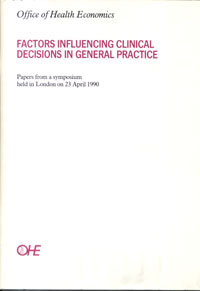In January 1989 the Government announced its proposals for reforming the National Health Service in the White Paper ‘Working for Patients’ (CM555). The two main objectives…
In January 1989 the Government announced its proposals for reforming the National Health Service in the White Paper ‘Working for Patients’ (CM555). The two main objectives of the reforms, as outlined in the White Paper, are ’to give patients, wherever they live in…
In January 1989 the Government announced its proposals for reforming the National Health Service in the White Paper ‘Working for Patients’ (CM555). The two main objectives of the reforms, as outlined in the White Paper, are ‘to give patients, wherever they live in the UK, better health care and greater choice of the services available; and greater satisfaction and rewards for those working in the NHS who successfully respond to local needs and preferences’. In highlighting the need for change the Government cited wide variations in the prescribing habits of general practitioners, two fold variations in the medicine costs per head of population, and twenty fold variations in the rate at which general practitioners refer patients to hospital. By reducing these variations the Government aims to raise the standards of all hospitals and general practices to those of the best.
However, whilst there has been little controversy regarding the objectives of the NHS reforms there has been widespread concern that the changes proposed will not achieve these aims. By concentrating on high levels of activity and cost, whether this is in the area of prescribing or referrals, there is a real danger that pressures for cost containment will prevail at the expense of the more appropriate objective of cost effectiveness. This concentration on the need to restrict and re-educate and clinical problems presented by under treatment and the consequent denial of potential health benefits to patients being overlooked.
Thus it was the light of these concerns that the Office of Health Economics organised the symposium on ‘Factors Influencing Clinical Decisions in General Practice’. The meeting was held at the Ciba Foundation on 23 April 1990 and was jointly chaired by Sir Donald Acheson, Professor T P Whitehead and Professor G Teeling Smith. This booklet contains the eleven papers which were presented for discussion.
Whilst no definite solutions to the problems of variations were offered during the symposium, the papers presented clearly demonstrate that to look at variations in prescribing and referral rates in isolation is meaningless. Unless it is known at what point clinical intervention is appropriate it is not possible, with any degree of certainty, to say whether a particular rate of prescribing or referral is too high or too low.
